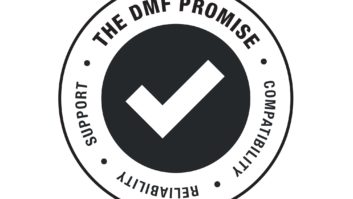Weve all had them: the projects that slowly but surely creep out of scope and end up making both you and the client unhappy. You know how much more you had to do than what you bargained for, and no matter how much you do, the client always expects more. Ultimately, there are battles over payments, late fees, unfinished programming, etc. It can make you sick in the stomach, and there often seems to be no way out of the stalemate.
Ive dealt with this issue many times over the last decade of doing contract work and learned a few lessons from my mistakes.
State Your Intentions
The first one is to specify everything. It sounds trite, easy, and obvious. But does anyone really mechanize the process to the point where there cant be an argument over the successful completion of the job?
Large-scale commercial AV projects are a good example of proper specification process. A consulting engineering firm is hired to design and specify the exact performance and functional terms of an installation. An AV contractor bids on the job, making assurances that they will fulfill the terms of the specification. There are really no two ways about it. The installation meets or doesnt meet the specification. If changes are needed after the contract is awarded, its time for a change order and a re-assessment of the job scope and costs.
Now consider the consumer world. Do clients ever give you a thorough specification for their theater, or whole-house AV system? Do they hire a consulting engineer before hiring you? Do they realize or care about the processes that you have to go through to plan, pre-wire, install, finish out, debug, and commission a system for them? I bet the answer is no to most of the above. In most cases, its actually incumbent on you to create the specification for them, acting as their consulting engineer. My company, in fact, gets hired to do the engineering work for high-line theaters, and we have found that it can be challenging to define the full scope of a design. Thats because there are often many people involved in the decisions, including the clients significant other, architect, interior designer, and builder. Its enough to drive you crazy even before you have punched the first wiring pass-though hole in a stud!
No matter what happens, take time to write the specification and documentation. After a number of projects, it will become an easier process, and you will establish more templates. Write out everything you can think of. For theaters, specify the number of seats, the number of speakers, the target SPL, the visual angle, the screen light levels, the frequency response, the reflection decay time, the sound isolation, the noise floor, the ambient light levels, etc., that the room will have. If clients supply their own gear, specify that you dont take responsibility for its performance, operation, or programming; youll be doing that on a T&M basis only. While youre at it, specify that the specification needs to be accepted by the client, and specify the terms of work, meetings, sign-offs, time lines, etc. In most projects, the client will have action items and will need to supply information on a regular basis. Failing on their action items or failing to supply info you need will delay you and potentially cause you to supply the wrong system. If the client fails to show up at a critical meeting or the meeting takes place under sub-standard conditions (noisy restaurant with inebriated client), the terms of work and time lines are to be slipped and renegotiated.
Ready, Set, Dont Start Yet
Dont start work until all specification documents are read, approved, and signed. It can be tempting to just get going, already. But believe me, the projects with fluid specifications and unclear scopes and responsibilities will mess you up beyond belief. Youll lose money, and youll lose the clients respect.
On the topic of respect, realize that much of that is gained by the boundaries you set up at the start of the project. If you seem pliable and wishy-washy many of the CEO/lawyer types you work for will eat you alive, assuming that they can control your every move. I dont mean that you have to be inflexible and confrontational. I mean that you have to be clear about what you will and wont do.
At times, clients will be annoyed by all this rigor and formality. They may be used to taking advantage of their contractors. Or they may not want to make too many decisions up front, leaving you in the dangerous position of absorbing the costs of change orders. I recommend that you refuse to work with clients who arent comfortable with what ultimately is a high degree of clarity and specificity. There is no need to be overly nice. Often the tough love approach leads to better business and better projects. Also realize that a clear set of specifications and expectations make it easier for your staff to work on the project. Everyone on your team will know exactly what is expected of them, when the work needs to be completed, and what grade of quality is required. Also, your team members need to learn to say no (or change order) to clients who want last minute changes. Every time they are empowered to keep the project on track, they deserve kudos.
Live from the Site, Its…You
Once the project has started, make sure to do regular check-ins with your staff, and go visit the site. In a few minutes you will be able to assess if work is following the agreed-upon specifications and staying on schedule. Most team members have a hard time gauging the progress of a project, so you will need to help them clarify the staging process. Once you have a clear assessment, report this back to the client. He/she will love to know if you are ahead of schedule, on schedule, or even behind schedule. Realize that catching that you are behind schedule early enough for other trades to make adjustments is a whole lot better than waiting for the real catastrophe to happen. You may actually find that other parties in the project are also having scheduling issues and that there is a need for global readjustment.
Gentlemen, Start Your Management
Are you and your team ready for this? The project management process will take you time at the head-end of the work, only to save you aggravation in the end. You will need cooperation from your client to make the specifications process flow smoothly, so be prepared to refuse the work if they dont want to align with your process.
Chase Walton contributed to this article.







